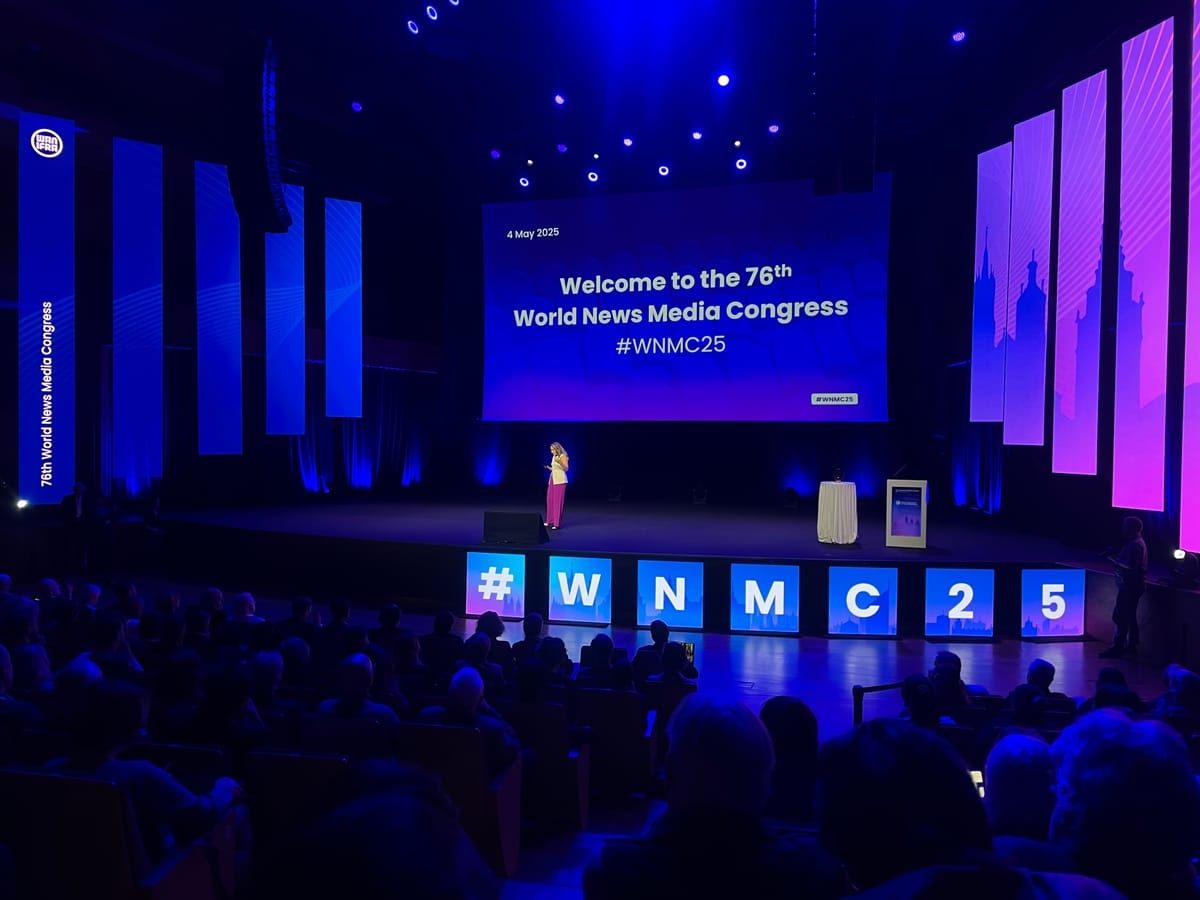The 2025 World News Media Congress in Krakow brought together media leaders, editors, and innovators to discuss the future of journalism across AI, product strategy, platform shifts, and policy. Throughout the three days, one theme kept surfacing in panels and conversations: how to stay relevant to younger audiences? From hallway chats to breakout sessions, there was growing recognition that the next generation expects journalism to show up differently.
One session in particular stood out to us - delivered by Liesbeth Nizet, Head of Future Audiences Monetisation at Mediahuis in Belgium. The title says a lot: her role was created to address a structural problem in the industry - the growing gap between traditional media products and the way younger audiences engage with news. Her job, she says, is to rethink what value journalism offers this generation, and how to earn their attention, trust, and support.
The problem is how journalism shows up
Bettina opened with a simple question: “Who paid for news this morning?” Most hands went up. “Who knows a Gen Z colleague or intern who did?” Nearly all hands went down. That drop-off reflects more than age - it signals a gap in how news fits into daily routines, values, and habits.
Belonging needs to be designed in
Gen Z audiences respond to media that makes space for interaction and shared perspective. At Mediahuis, they use a five-step model to track that connection:
Inspiration → Excitement → Belonging → Support → Fandom
It’s not about going viral, but it's about earning a place in people’s lives.
Start from zero
Instead of tweaking old brands, Mediahuis created new Gen Z-first titles - with their own tone, formats, and teams. These brands are built with Gen Z, not only aimed at them. That shift also influences how they hire and retain younger talent across the organisation.
Social is not the trailer - it’s the main stage
TikTok, YouTube, and Instagram are where journalism needs to live and be trusted. Mediahuis puts full reporting into platform-native formats, using social not to push traffic but to build presence.
Trust grows from proximity and perspective
Bettina stressed the role of hyperlocal storytelling. When stories reflect the everyday lives of young people - and are told by journalists close to those experiences - they resonate more deeply. It’s not about simplification, but clarity and relevance.
What to take away
- Gen Z engagement is shaped by care, not click-through rates
- Young journalists should lead
- Investing in experimentation pays off across the newsroom
- Listening is essential - especially when the feedback is uncomfortable


